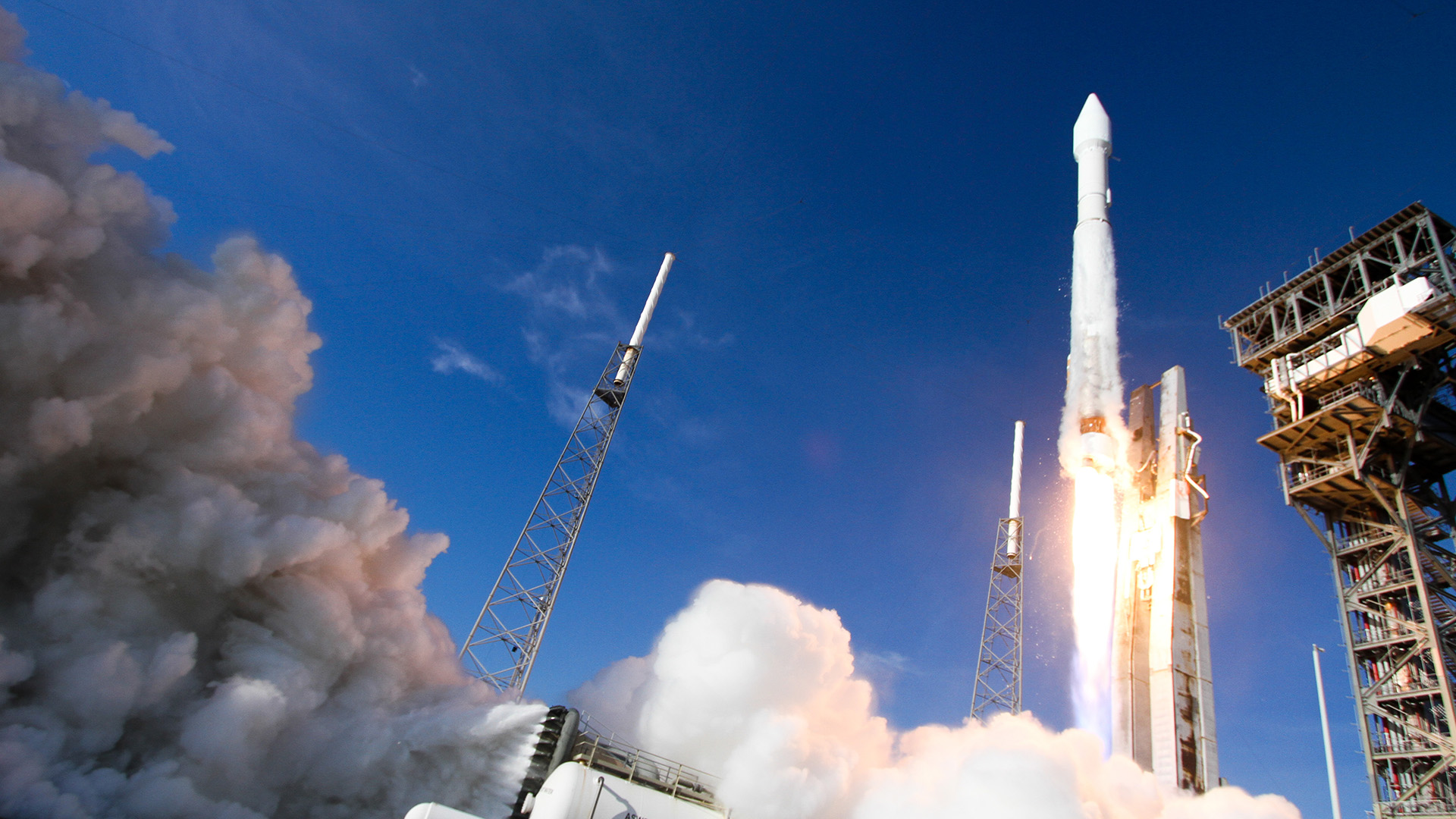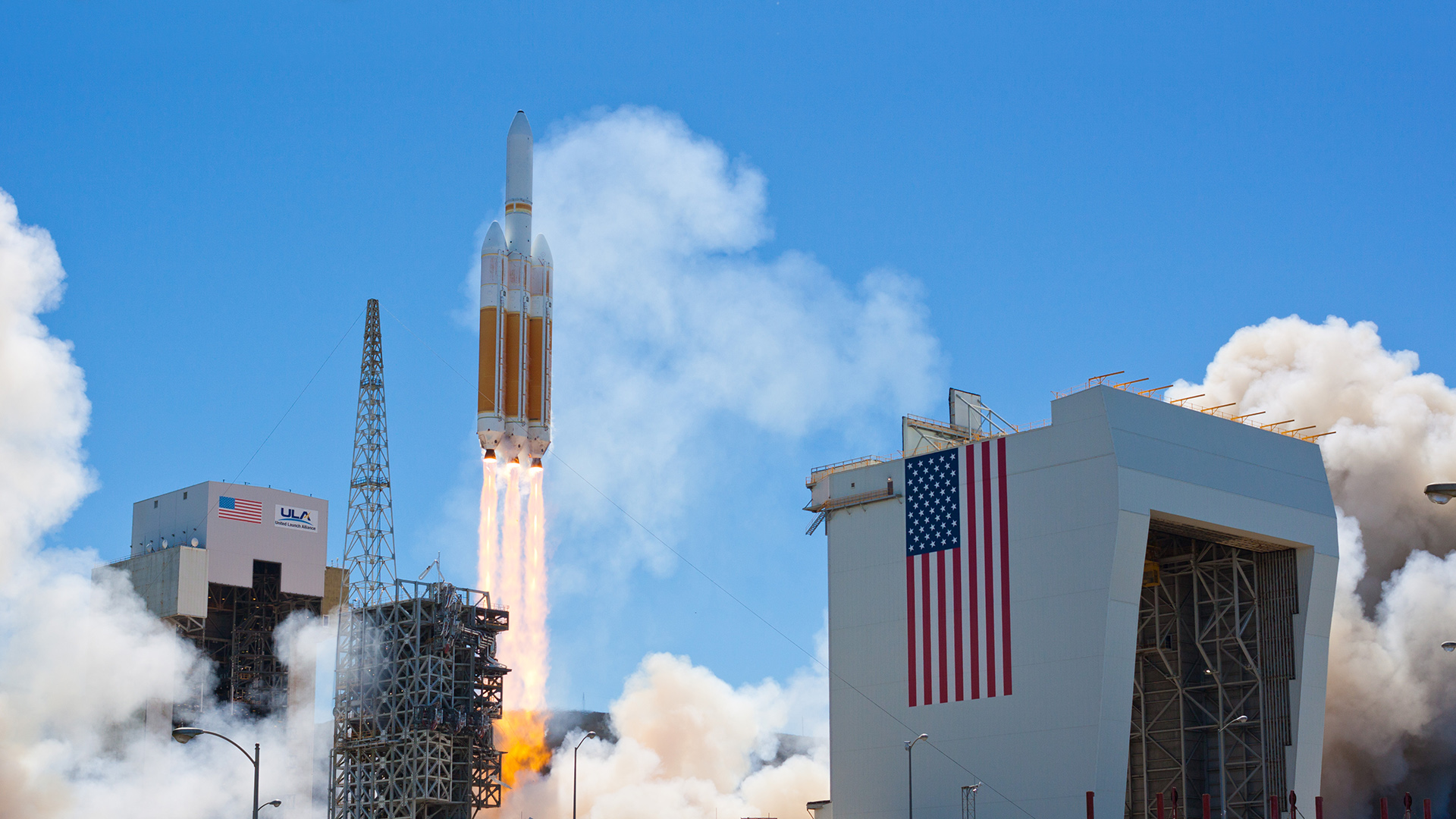Missions
Next LaunchUnited Launch Alliance Successfully Launches OA-4 Cygnus to International Space Station
Launch Marks First ISS Resupply Mission for ULA
Atlas V OA-4 Mission Overview
Cape Canaveral Air Force Station, Fla., (Dec. 6, 2015) – A United Launch Alliance (ULA) Atlas V rocket carrying the OA-4 Cygnus resupply spacecraft to the International Space Station lifted off from Space Launch Complex-41 Dec. 6 at 4:44 p.m. EST.
The mission, flown for Orbital ATK under NASA’s Commercial Resupply Services contract, marks the first time the Cygnus has flown on an Atlas V rocket. This was ULA’s 12th launch in 2015. At just over 8 tons, Cygnus is the heaviest payload to launch atop an Atlas V rocket.
“Congratulations to the team on today’s successful launch! Partnering with Orbital ATK to launch the Cygnus resupply vehicle to the ISS for NASA, a first for ULA, marks a great achievement for the team, and has provided a critical service to the nation and to the crew on the ISS,” said Jim Sponnick, ULA vice president, Atlas and Delta Programs. “This mission is delivering more than 7,000 pounds of cargo including supplies for the crew and critical materials supporting science and research investigations.”
Cygnus is a low-risk design incorporating elements drawn from Orbital ATK and its partners’ existing, flight-proven spacecraft technologies. Cygnus consists of a common Service Module (SM) and a Pressurized Cargo Module (PCM). The SM is assembled and tested at Orbital ATK’s Dulles, Virginia, satellite manufacturing facility and incorporates systems from Orbital ATK’s flight-proven LEOStar™ and GEOStar™ satellite product lines. The PCM is based on the Multi-Purpose Logistics Module (MPLM), developed and built by Thales Alenia Space of Italy.
"In the 12 months since this launch was ordered, the ULA and Orbital ATK teams worked very closely together to integrate the Cygnus with the Atlas launch system, including development of a new structural adapter and also a mission design that includes a 30-minute launch window for this ISS rendezvous mission, ” said Sponnick.
This mission was launched aboard an Atlas V 401 configuration vehicle, which includes a 4-meter diameter payload fairing. The Atlas booster for this mission was powered by the RD AMROSS RD-180 engine and the Centaur upper stage was powered by the Aerojet Rocketdyne RL10C-1 engine.
ULA's next launch is the GPS IIF-12 satellite for the U.S. Air Force, scheduled for Feb. 3, 2016, from Space Launch Complex-41 from Cape Canaveral Air Force Station, Florida.
With more than a century of combined heritage, United Launch Alliance is the nation’s most experienced and reliable launch service provider. ULA has successfully delivered more than 100 satellites to orbit that provide critical capabilities for troops in the field, aid meteorologists in tracking severe weather, enable personal device-based GPS navigation and unlock the mysteries of our solar system.
For more information on ULA, visit the ULA website at www.ulalaunch.com, or call the ULA Launch Hotline at 1-877-ULA-4321 (852-4321). Join the conversation at www.facebook.com/ulalaunch, twitter.com/ulalaunchand instagram.com/ulalaunch.





